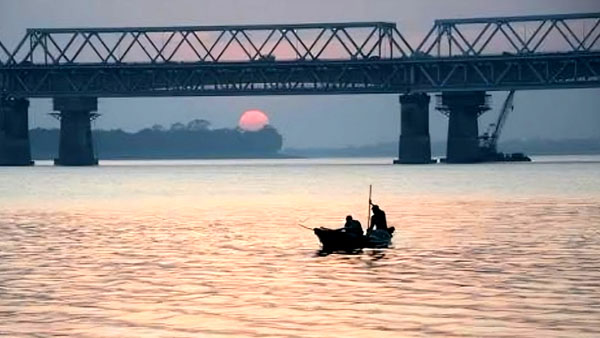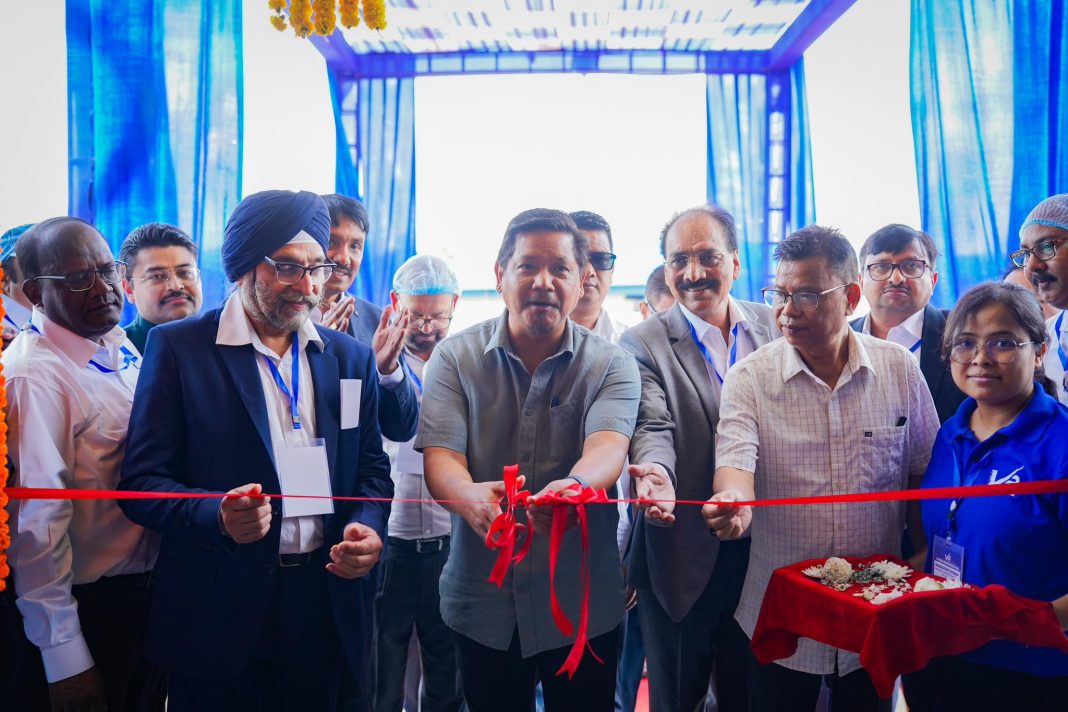By Dipak Kurmi
The formal commencement of a megastructure that could dramatically alter the flow of one of Asia’s most vital rivers was marked on July 19, 2025, during a ceremony attended by Chinese Premier Li Qiang. This dam—set to become the world’s largest hydroelectric project with an immense 60,000 MW generation capacity—is being constructed on the Yarlung Zangbo (Brahmaputra) at the Great Bend in Medog County, Tibet, just before the river enters Arunachal Pradesh as the Siang and later flows into Assam as the Brahmaputra. With an estimated cost of $167.8 billion, the project represents not only an engineering feat but also a potent tool of geopolitical influence, a source of hydrological unpredictability, and a cause of ecological concern for downstream countries—especially India and Bangladesh.
This is not the first time China’s infrastructure push in the ecologically fragile Tibetan Plateau has alarmed its neighbours. Yet, this latest project dwarfs earlier hydropower attempts in ambition and consequence. The sheer scale of the dam, projected to be three times the capacity of China’s Three Gorges Dam on the Yangtze, redefines the stakes involved. And as China asserts its “sovereign right” to build on its side of the river, downstream countries brace for potential repercussions—ranging from water scarcity to catastrophic flooding.
In Arunachal Pradesh, the closest Indian territory to the dam site, concerns are no longer hypothetical. Chief Minister Pema Khandu, in an interview shortly before the groundbreaking ceremony, minced no words in describing the project as a potential “water bomb” and an “existential threat” to his state. For the tribal communities living along the Siang, the river is not merely a waterway—it is the soul of their livelihood, culture, and ecology. Khandu warned that in the event of sudden water release—either by accident or design—the Siang valley could be devastated, wiping out entire settlements and ecosystems. “Setting aside the military threat from China,” he said, “this is far more dangerous… our Siang and Brahmaputra rivers could dry up considerably in the long run.”
Indeed, fears about China weaponising water are not unfounded. In the evolving India-China equation, where border tensions and strategic distrust run deep, Beijing’s unilateral construction of such a vast reservoir raises legitimate questions about intent and preparedness. In the aftermath of the April 2025 Pahalgam terror attack and India’s suspension of the Indus Waters Treaty with Pakistan, some experts worry that Beijing may be seeking to gain a new pressure point to defend its all-weather ally.
Tibet’s seismic volatility compounds these anxieties. The Great Bend region, where the dam is being built, lies in an active earthquake zone created by the collision of the Indian and Eurasian tectonic plates. A catastrophic landslide or dam failure triggered by a natural disaster could unleash devastation downstream. Moreover, little is known about how China plans to manage reservoir operations or emergency protocols—issues that India has consistently flagged but with limited success.
Despite the alarming implications, New Delhi has thus far responded with strategic restraint. There was no official reaction to the July 19 ceremony. However, India has long voiced concerns over Chinese infrastructure activity on the Yarlung Zangbo. In January, Ministry of External Affairs spokesperson Randhir Jaiswal reiterated that India, as a lower riparian state with established user rights, expects transparency and consultation. “We have consistently expressed…our views and concerns to the Chinese side over mega projects on rivers in their territory,” he stated. “The Chinese side has been urged to ensure that the interests of downstream states of the Brahmaputra are not harmed.”
China, for its part, insists that the project is fully within its sovereign rights. Chinese Foreign Ministry spokesperson Guo Jiakin stated on July 23 that Beijing has maintained “necessary communication” with India and Bangladesh, and is engaged in hydrological cooperation and disaster reduction. However, the absence of any binding water-sharing agreement between India and China leaves such communication subject to Beijing’s discretion.
Assam, where the Brahmaputra is more than just a river—it is the state’s economic backbone, cultural symbol, and ecological keystone—is also watching with apprehension. On July 21, Assam Chief Minister Himanta Biswa Sarma sought to downplay immediate concerns, arguing that the Brahmaputra’s might comes not just from its Tibetan origins but from the tributaries fed by Arunachal Pradesh, Bhutan, and the monsoonal bounty within Assam itself. According to Sarma, China contributes only about 30–35% of the river’s total volume, mostly from glacial melt and limited rainfall in Tibet. In fact, he suggested, in a counterintuitive twist, that reduced water flow from Tibet might help mitigate the devastating annual floods in Assam.
Yet, even Sarma conceded that the issue is complex. “There are different theories on the potential impact of the dam,” he said, adding that the Centre “must already be having a discussion with China, or will have a discussion.” While the Brahmaputra’s volume may be replenished by rainfall and tributaries, the dam’s ability to control seasonal flows—either through retention or sudden discharge—introduces a degree of unpredictability that Assam, already struggling with flood-displacement cycles, cannot afford to ignore.
Experts have echoed these fears. Ashok Kantha, a former Indian Ambassador to China, called the project “very risky, dangerous, and irresponsible,” pointing to its location, scale, and lack of cooperative frameworks. He urged New Delhi to raise its concerns “forcefully,” warning that trust cannot be built on vague assurances alone. Others, like water policy expert Uttam Sinha, advocate a calibrated but assertive approach. “There may not be reasons to be phobic about China’s move,” he said, “but India should be concerned.” Sinha suggests that India conduct thorough scientific modeling of the dam’s downstream impact and build countervailing capacity—both in diplomacy and infrastructure.
To that end, India’s long-stalled Upper Siang project in Arunachal Pradesh assumes new strategic relevance. This proposed 300-metre-high dam, with its massive storage potential, is seen as both a power-generating initiative and a strategic buffer to absorb fluctuations in river flow caused by Chinese infrastructure. However, local resistance—rooted in environmental concerns and displacement fears—has slowed its progress. Balancing ecological preservation with strategic security will require sensitive statecraft and transparent community engagement.
India must also adopt structural measures to prepare for any long-term disruptions. The National Water Development Authority has proposed two ambitious link canals to connect the Brahmaputra and its tributaries to the Ganga basin, thereby diverting surplus water to drier regions. While the interlinking of rivers is a contentious subject, such proposals underline the necessity of building adaptive water infrastructure in response to emerging geopolitical risks.
In the diplomatic domain, India should push for a basin-wide cooperative mechanism that includes Bhutan, Bangladesh, and even Myanmar. A common protocol for hydrological data sharing, advance warning systems, and disaster preparedness could go a long way in building collective resilience. Bangladesh, in particular, has a high stake in the uninterrupted flow of the Brahmaputra, which sustains its agriculture and inland fisheries. So far, Beijing claims to be cooperating with Dhaka on data-sharing, but without international oversight or third-party verification, the efficacy of such collaboration remains uncertain.
India and China are currently engaged in a broader set of confidence-building measures following tensions along the Line of Actual Control (LAC) since 2020. Foreign Secretary Vikram Misri last October announced that the two sides had reached agreements on patrolling arrangements and disengagement, and that talks were underway for resuming cross-border cooperation—including on rivers. During discussions in Beijing in March 2025, both countries reportedly exchanged views on water-related issues. And on July 23, in a subtle signal of thawing ties, India resumed issuing tourist visas to Chinese nationals and restarted the Kailash Mansarovar Yatra after a five-year hiatus.
These developments indicate that while relations remain fraught, avenues for dialogue remain open. India must use these channels to press for transparency on the Medog dam and future Chinese hydro-projects. At the same time, it should not delay in building its own countermeasures—technological, diplomatic, and infrastructural.
The Yarlung Zangbo-Brahmaputra is no ordinary river. It originates in the Roof of the World and traverses geopolitical fractures and cultural continuums before emptying into the Bay of Bengal. It is sacred to Tibetans, central to Assam, and vital to Bangladesh. The decision by one nation to alter its flow at source cannot be seen as a sovereign act in isolation—it is a regional event with transboundary consequences.
China’s ambition to harness the river’s power is understandable, given its vast energy needs and climate targets. But ambition must not override accountability. Without shared frameworks and institutional transparency, infrastructure becomes an instrument of uncertainty. For India, the challenge is to respond without overreaction, to prepare without paranoia, and to lead without provocation.
In the end, water must remain a source of life, not leverage. The Brahmaputra’s future—and that of millions who live along its banks—depends on it.
(the writer can be reached at dipakkurmiglpltd@gmail.com)




